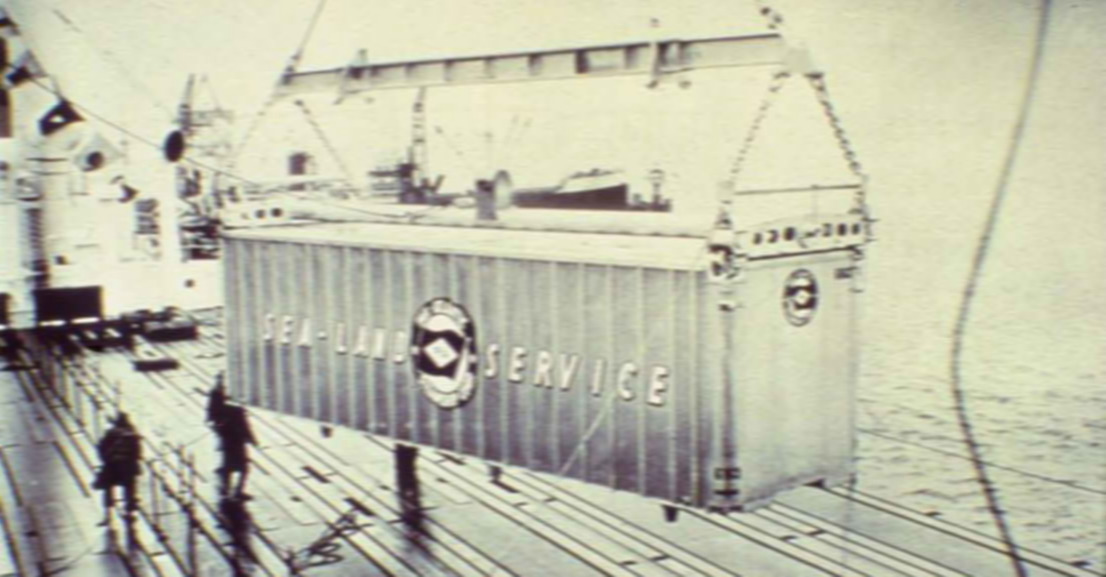
Everyone is talking about end-to-end automation, and while software is great at many things, it's not always in your best interest to put your most business-critical workflows on autopilot.We’ll talk a bit about how you should be thinking about automating parts of your business. We’ll focus on the forwarder but this is generally applicable for any business.
Emails, voicemails, spreadsheets (both analog and digital), ERPs, TMSs, WMSs, legacy accounting software, bespoke in-house systems…this only scratches the surface of where your shipping data might be hiding when you can’t find it. Estimates range from 15-30 when it comes to just how many disparate systems a single freight forwarding company might have in play at any one time.
And each of those systems can be responsible for siloing your shipping data, locking it away where your other systems can’t access it when they need to
While there is no true consensus for how much this situation costs the shipping industry every year, estimates range from 20-30% of annual revenue to a staggering $15 million per company per year lost to poor quality data (a category that includes data lost to silos).
What is your average freight forwarder to do? How can you reclaim your lost time and disappeared revenue? First let’s dive a little deeper into the causes and effects of data silos, then we’ll take a look at how AI-powered automation platforms can help with that reclamation project.
Major pain points caused by data silos
Every time a piece of data is missing or incomplete, it hits you right in the bottom line. Scenarios where you might be inadvertently causing such pain to your own revenue (not to mention causing irritated customers when they can’t find their shipment data) include:
- General operational inefficiencies: Data re-entry bottlenecks, resolving conflicting records, and route optimization failures all cause slowdowns in workflows, costing time and money.
- Visibility gaps: When the right and left hands don’t know what the other is up to (ie sales, payments, warehousing teams being cut off from each other), misrouted exception alerts, and inaccurate ETAs all lead to customer service delays that impact your bottom line.
- Compliance risks: Whether an error in customs clearance, a failure in sanctions screening, or gaps in your audit trails; data silos can leave your company open to pricey risks
Routes around the bottlenecks caused by data silos
There are steps you can take, starting today, to clear the blockages and begin keeping your data flowing accurately. These are general recommendations, please reach out if you have any questions or would like details on how Reform can assist in your specific case.
API-based integration platforms
Application programming interfaces (APIs) are software connectors that allow programs to talk to each other and share data. Most modern software, including software as a service (SaaS) offerings, provides API access, allowing integration platforms to pull data from multiple systems into a unified dashboard where you can then work with it all from a single interface, cutting the chances of missing or incomplete data interfering with your workflows.
Process Mining
Using machine learning (ML)-based advanced analytics, process mining is a process that can help surface exactly where in your workflow the data is becoming corrupt or otherwise inaccurate. Obviously you’ll still need to tweak the workflow to resolve the issue, but using process mining can streamline the process by pinpointing the source of the bottleneck or data corruption.
Collaborative data governance frameworks
Because many of the systems involved in a workflow (not only in freight forwarding, though this industry is heavily dependent on cross-team data) are managed by different teams within an organization, it’s crucial to get everyone on the same page. There are AI-powered options for frameworks you can work with to ensure you have buy-in from all involved parties before starting to adjust or tweak the data flowing between teams.
You’ll notice most of the above involve Artificial Intelligence (AI), and there’s good reason. AI and the ML algorithms that power it are central to the latest moves in analyzing massive quantities of data and getting divergent systems to play together nicely. Some of the ways AI can help streamline your data workflows include:
Data harmonization and document ingestion
With critical data residing in emails, spreadsheets, or even hard copy, document ingestion and data harmonization are key steps in any freight forwarding workflow to get under control before moving on to deeper automations. Imagine how much smoother orders will go when your sales team can enter a quote, operations can create the booking, warehousing can receive the shipment, and accounting can get the invoice ready to send out—all without anyone needing to call to check on status or go hunting for the right numbers.
Predictive supply chain twins
Digital twins have existed for years, but the tech has recently matured to a point where ML-powered predictive analytics allow for mapping an end-to-end supply chain. This digital model allows freight companies and their customers to gain a deeper understanding of where problems lie, what processes are working as intended, and even uncover where someone may have created an ad hoc workaround to a problem you didn’t even know existed.
Agent-based process automation
AI-powered robotic process automation (RPA) is another emerging technology that’s made its way into the freight and shipping world. Many agents understand natural language use, allowing nearly anyone to create automated routines that free up person-hours to get on with the more human, creative side of their work rather than spending hours on rote data entry and reconciliation tasks.
Reform’s got your freight forwarding data de-siloing needs covered
Our AI agent-based automation platform allows you to take your existing standard operating procedures (SOPs) and automate them. Whether you use one of our pre-built automation templates for a common use case (accounts payable, quote creation, shipment consolidation, etc.) or you use our intuitive, no-code natural language interface to build a new automation. Some of the benefits of this AI-agent/automation hybrid solution include:
AI-powered document ingestion and harmonization
Reform was built for freight forwarders. Our intuitive automation builder uses natural language to configure the actions you need (we support over 80 languages at the moment). That means when you tell Reform to read incoming emailed order forms, for example, there’s no need to worry about the platform understanding which fields contain which data points.
Divergent and legacy system integrations
Our focus on freight forwarding also means we know the state of many of the major players in the logistics tech field. Many don’t offer standard APIs, so Reform has built bespoke integrations so all you need to do is point and click to start building your own bespoke automated workflows, no matter how diverse, or legacy, your current stack is.
Turn-key automation templates
Over our time building for freight forwarders, we’ve noticed patterns emerge across the automations our customers build. The identification of these patterns led us to create starter templates, pre-built automations that require the user to simply update the business logic, choose their preferred trigger for the automation to kick off, and set the destination for the data—and voila! An automated workflow that can be deployed to production in under 30 minutes.
For further details on how Reform’s human-in-the-middle AI-agents and automation platform can help you sort out your own data silos, reach out to our team of experts today.






